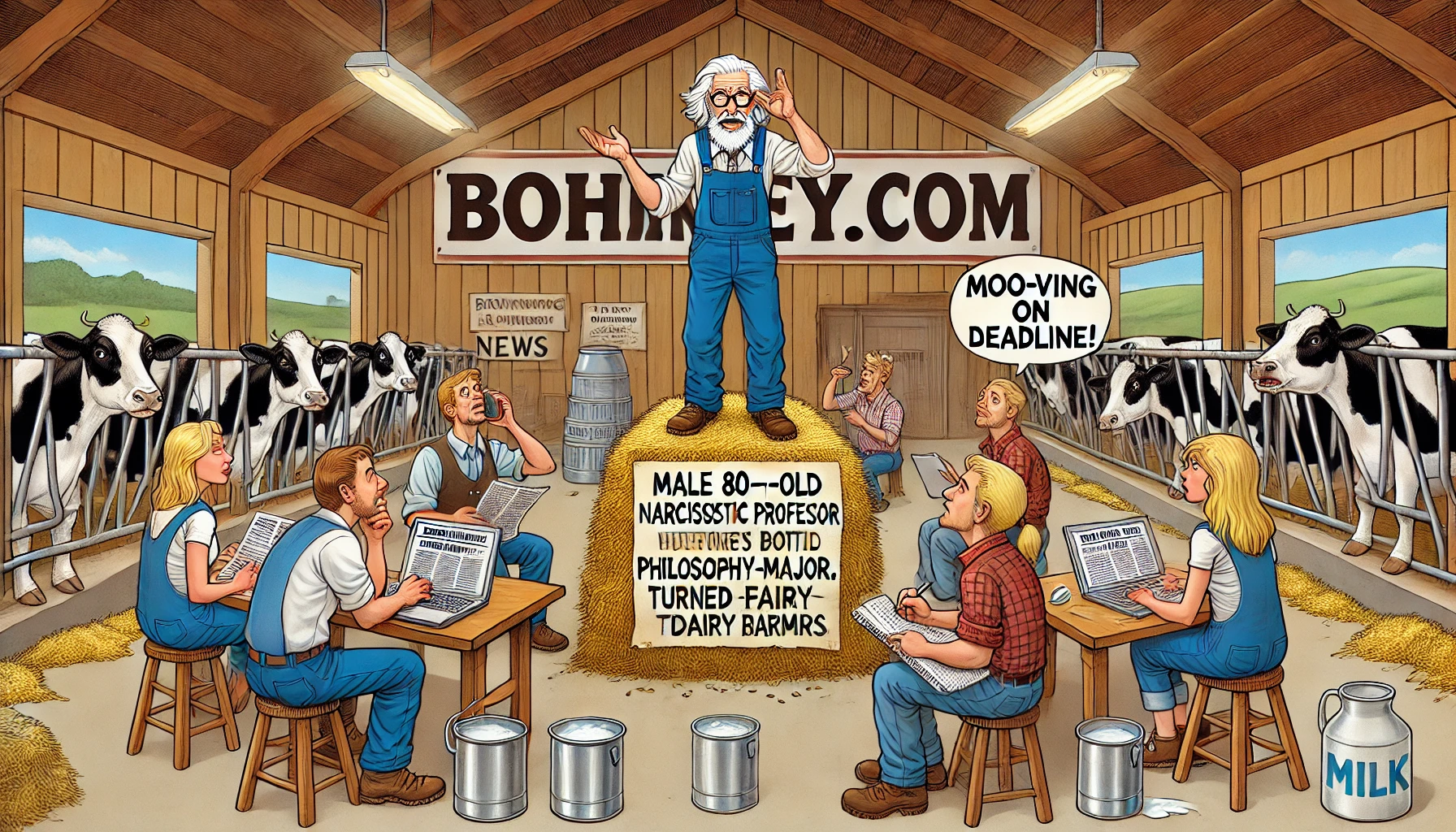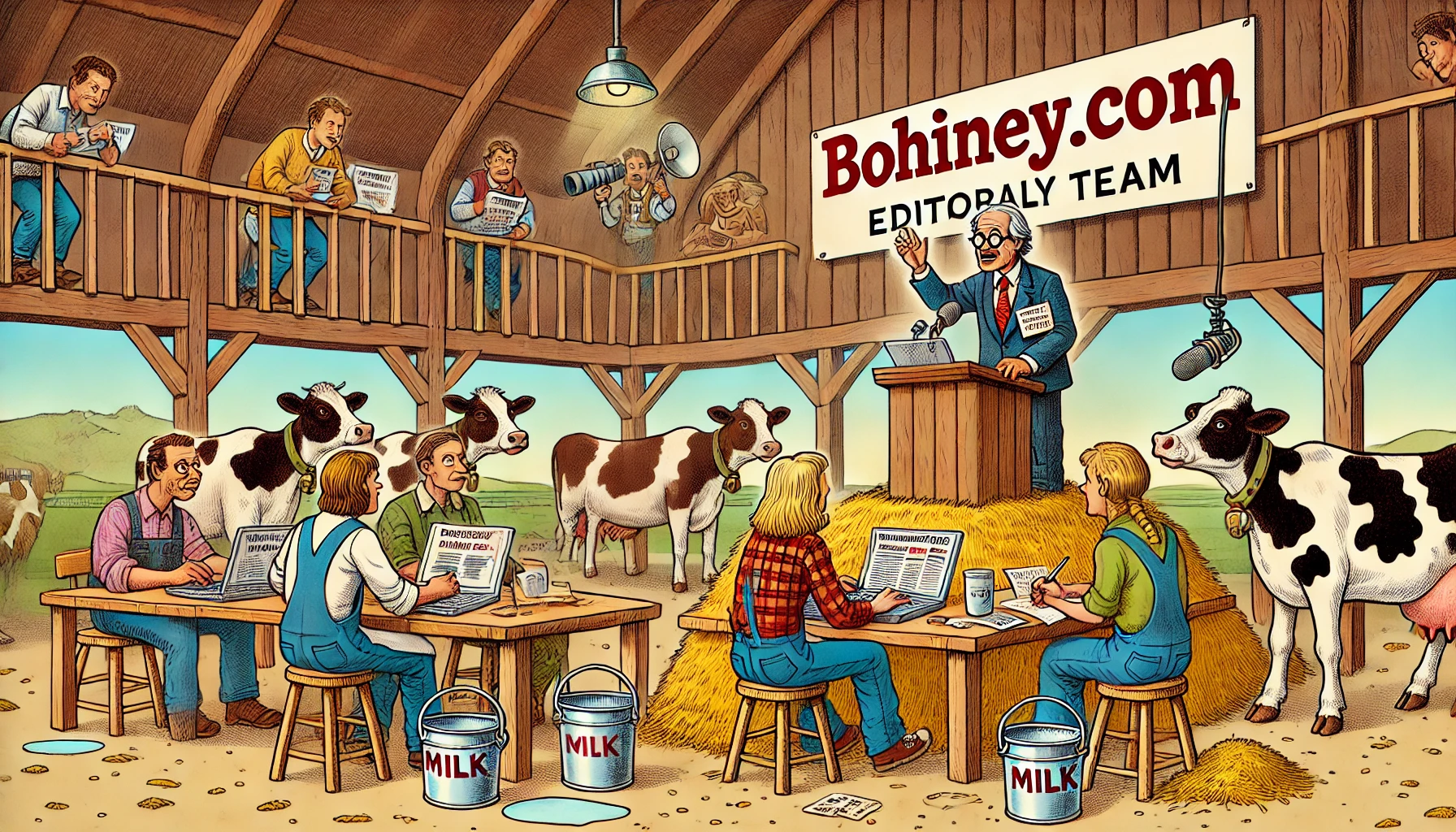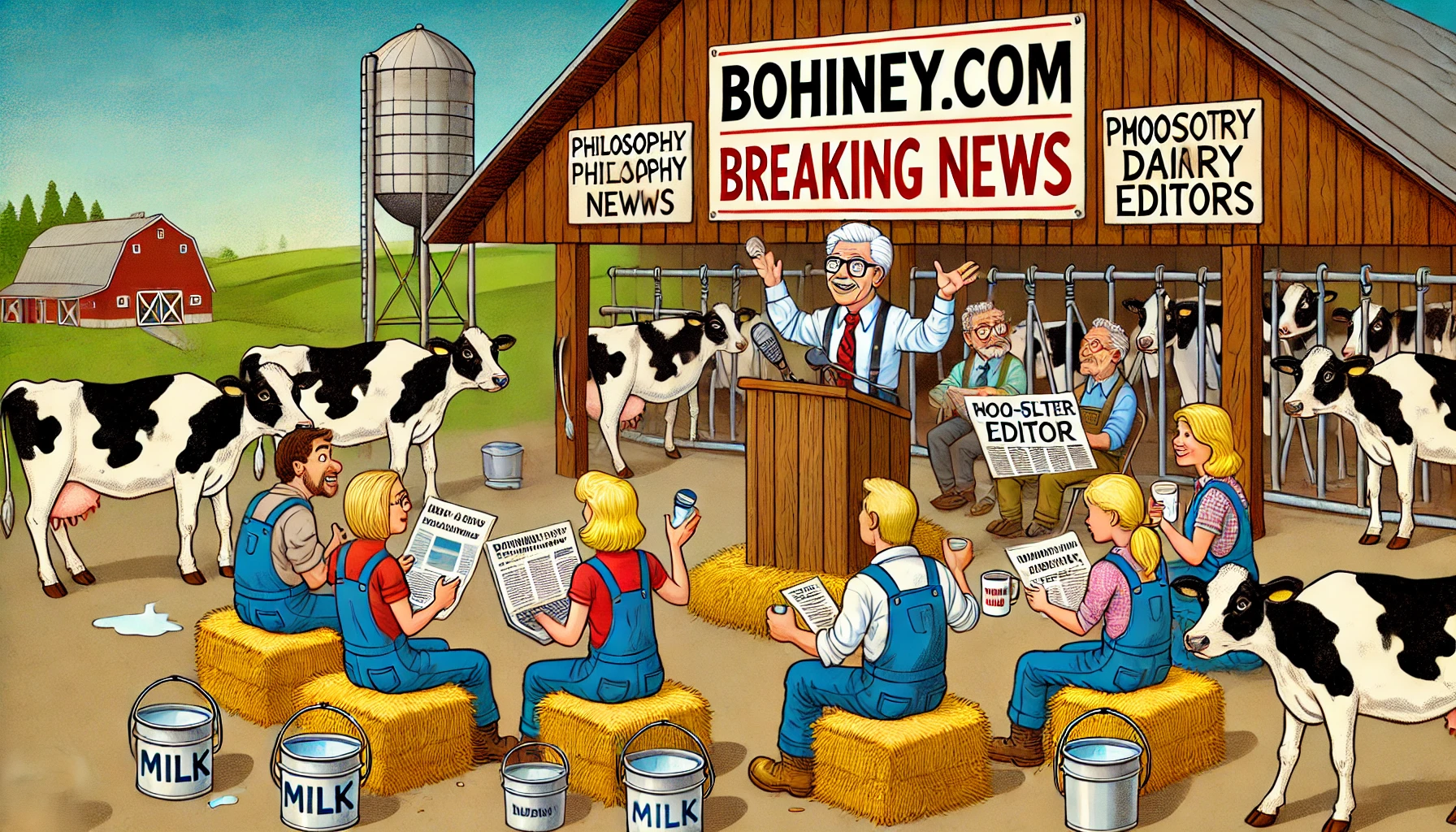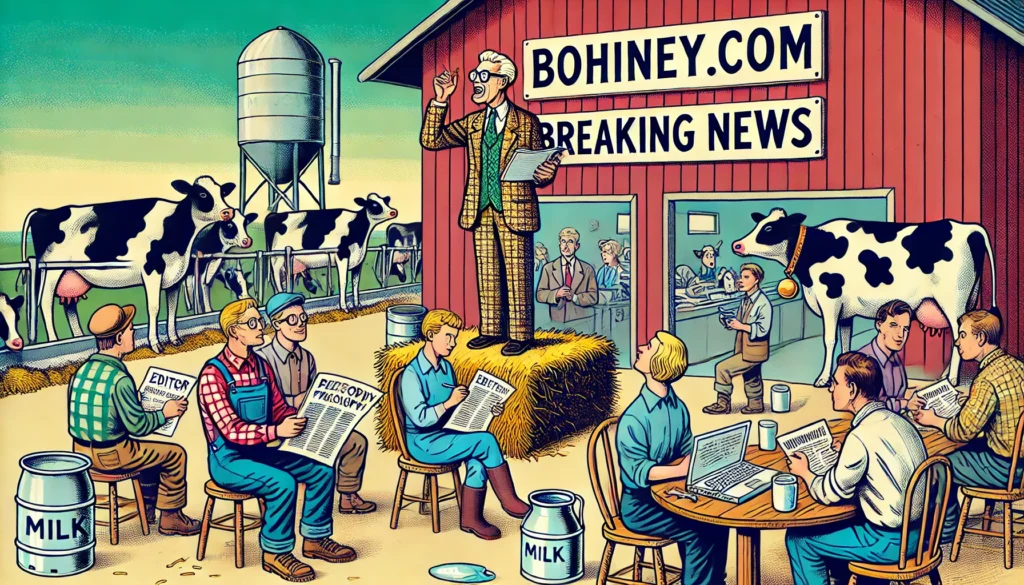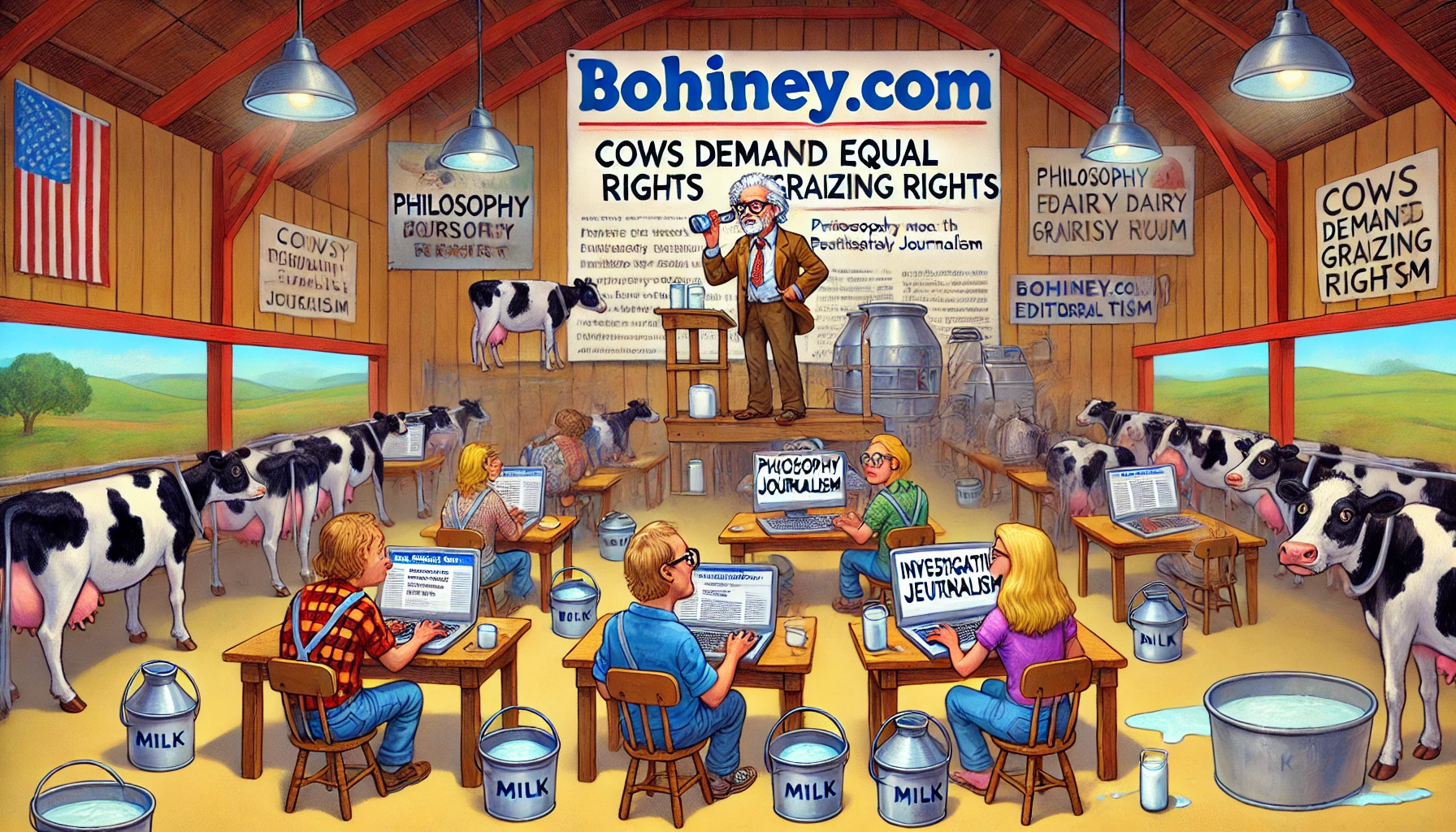Absolutist
Antics:
Ruffling
Feathers
in
Royal
Courts
Absolutism—a
form
of
governance
characterized
by
concentrated
authority
in
a
single
ruler—dominated
much
of
Europe
from
the
16th
through
the
18th
centuries.
Monarchs
like
Louis
XIV
of
France,
Peter
the
Great
of
Russia,
and
Charles
I
of
England
claimed
extensive
prerogatives,
shaping
not
only
political
but
also
cultural
life
at
their
courts.
While
this
concentration
of
power
yielded
dazzling
spectacles
and
monumental
architecture,
it
also
fostered
environments
ripe
for
comedic
subversion.
Courtiers,
jesters,
dramatists,
and
even
foreign
ambassadors
found
ways
to
poke
fun
at,
critique,
or
otherwise
challenge
royal
authority—if
only
in
veiled
or
indirect
forms.
This
approximately
3,200-word
exploration
examines
the
interplay
between
comedic
expression
and
absolutist
power,
revealing
how
laughter,
far
from
being
suppressed,
often
thrived
in
royal
courts,
sometimes
ruffling
feathers
and
sometimes
serving
as
a
safety
valve
for
social
tensions.
Important
Link
For
further
research
on
court
life
under
absolute
monarchies,
consult
Europeana,
a
digital
platform
offering
sources
on
European
cultural
heritage,
including
manuscripts,
portraits,
and
accounts
of
court
festivities.
I.
The
Age
of
Absolutism:
Context
and
Controversies
A
Shifting
Political
Landscape
Between
the
late
15th
and
early
17th
centuries,
Europe
witnessed
the
gradual
centralization
of
state
powers
in
the
hands
of
monarchs.
This
shift—sometimes
abrupt,
sometimes
gradual—saw
feudal
institutions
give
way
to
proto-bureaucracies
loyal
to
the
Crown.
Rulers
claimed
to
govern
by
“divine
right,”
insisting
their
authority
stemmed
directly
from
God.
While
parliaments,
estates,
or
regional
assemblies
still
existed
in
some
states,
the
monarch’s
word
often
carried
decisive
weight.
Court
Culture
as
a
Show
of
Power
Absolutist
rulers
recognized
that
display
and
pageantry
bolstered
their
political
might.
Ornate
palaces
like
Versailles
became
microcosms
of
a
monarch’s
glory,
hosting
elaborate
ceremonies,
ballets,
and
theatrical
productions.
The
courtiers
who
flocked
to
these
royal
centers
vied
for
patronage,
hoping
to
secure
lucrative
positions
or
royal
favor.
Yet
the
very
opulence
of
these
courts
also
gave
rise
to
comedic
lampoons—from
subtle
jests
passed
around
in
whispered
gossip
to
satirical
theatrical
sketches
mocking
the
superficiality
of
court
etiquette.
II.
Louis
XIV’s
Versailles:
The
Zenith
of
Courtly
Spectacle
The
Sun
King’s
Grand
Stage
Few
monarchs
exemplified
absolutism
as
magnificently
as
Louis
XIV
of
France
(1643–1715).
Nicknamed
the
“Sun
King,”
Louis
transformed
a
modest
hunting
lodge
at
Versailles
into
a
sprawling
palace
complex.
This
architectural
wonder
served
as
the
backdrop
for
state
rituals,
performances,
and
near-constant
festivities.
Courtiers—some
aristocratic,
some
bourgeois—settled
at
Versailles
to
maintain
proximity
to
royal
patronage.
At
this
epicenter
of
power
and
extravagance,
comedic
expression
flourished
and
also
met
constraints.
Comédies-Ballets
and
Court
Entertainments
To
cultivate
a
refined
image,
Louis
XIV
commissioned
ballets
(in
which
he
sometimes
danced),
operas,
and
comedic
plays.
Notably,
the
playwright
Molière
and
composer
Jean-Baptiste
Lully
crafted
elaborate
“comédies-ballets.”
While
these
works
praised
the
king,
they
also
smuggled
in
satirical
elements
addressing
social
pretensions,
gullible
courtiers,
and
petty
rivalries.
The
comedic
kernel
lay
in
exposing
human
folly
without
undermining
the
monarch’s
prestige.
Louis
XIV
tolerated—indeed,
sometimes
relished—these
comedic
jabs,
as
long
as
they
didn’t
directly
challenge
the
throne.
The
Etiquette
Dilemma:
Comedy
in
Court
Rituals
The
court
at
Versailles
functioned
under
strict
etiquette
rules:
courtiers
scrambled
to
hold
the
king’s
candlestick
or
hand
him
his
shirt.
These
rituals,
while
underscoring
the
monarch’s
supremacy,
also
invited
irreverent
commentary.
Some
letters
and
diaries
record
comedic
stories
of
courtiers
humiliating
themselves
in
attempts
to
catch
the
king’s
notice.
Though
not
performed
on
a
formal
stage,
these
anecdotal
tales
circulated
among
the
nobility,
fueling
small
acts
of
satirical
dissent.
-
Private
Satires:
Courtiers
sometimes
penned
anonymous
poems
mocking
the
“ridiculous
scramble”
for
the
honor
of
handing
Louis
his
slippers.
Such
lampoons
rarely
reached
the
public
domain
but
functioned
as
a
release
valve
among
aristocrats.
III.
Russian
Splendor
Under
Peter
the
Great
Westernization
and
Satire
In
early
18th-century
Russia,
Tsar
Peter
I
(1682–1725),
known
as
Peter
the
Great,
launched
sweeping
modernizations.
He
built
a
new
capital,
St.
Petersburg,
adopting
Western
architectural
styles,
dress
codes,
and
cultural
tastes.
Royal
court
entertainments
expanded,
featuring
masked
balls,
comedic
sketches,
and
even
staged
parodies
that
ridiculed
old
Russian
customs.
However,
these
comedic
forays
were
not
wholly
benign;
Peter
wielded
them
to
shame
resistant
boyars
(nobles)
into
compliance
with
his
reforms.
The
All-Jesting,
All-Drunken
Council
Peter
famously
organized
the
“All-Jesting,
All-Drunken
Council
of
Fools
and
Jesters,”
a
semi-official
troupe
of
noblemen
expected
to
engage
in
raucous
parodies
of
religious
rites
and
mock
ceremonies.
These
comedic
gatherings
aimed
to
undercut
the
traditional
power
bases
of
the
Orthodox
Church
and
older
aristocracy.
While
superficially
playful,
the
comedic
travesties
carried
a
coercive
edge:
refusing
to
participate
or
failing
to
laugh
at
the
Tsar’s
jokes
could
signal
dissent.
-
Cultural
Clash:
Many
conservative
boyars
found
Peter’s
comedic
demands
humiliating,
as
they
revered
the
Church
ceremonies
he
spoofed.
Nonetheless,
the
Tsar’s
authority
forced
them
to
join
the
festivities.
This
blend
of
humor
and
intimidation
highlights
how
absolutist
power
sometimes
co-opted
satire
to
reinforce
its
own
authority.
Satire
in
the
Shadow
of
Autocracy
Unlike
Louis
XIV,
who
patronized
comedic
playwrights,
Peter
the
Great
presided
over
a
theatrical
environment
less
dependent
on
formal
drama.
Instead,
comedic
expression
often
emerged
in
ephemeral
events—banquets,
carnival-like
parades,
or
forced
comedic
pageants.
Consequently,
while
comedic
subversion
flourished
in
pockets,
open
criticism
of
the
Tsar
remained
perilous.
Accounts
from
foreign
diplomats
in
Russia
mention
comedic
banter
about
the
Tsar’s
“Western
obsessions,”
but
these
mockeries
had
to
remain
discreet
if
one
valued
life
and
limb.
IV.
England’s
Strained
Absolutism
and
Civil
War
Irony
Early
Stuart
Monarchs
England’s
trajectory
with
absolutism
was
more
contentious.
Kings
James
I
(1603–1625)
and
Charles
I
(1625–1649)
believed
in
the
divine
right
of
kings,
clashing
with
a
Parliament
that
asserted
its
own
prerogatives.
This
tension
climaxed
in
the
English
Civil
War
(1642–1651),
culminating
in
Charles
I’s
execution.
Despite
the
conflict,
comedic
commentary
persisted—whether
in
Royalist
masques
or
Puritan
critiques.
Court
Masques
Under
Charles
I
Before
the
war,
court
masques
staged
by
playwrights
such
as
Ben
Jonson
and
designer
Inigo
Jones
offered
extravagant
spectacles
glorifying
the
monarch.
While
mostly
deferential,
these
productions
sometimes
included
comedic
elements
satirizing
lesser
nobles
or
foreigners.
The
comedic
portion
served
to
underscore
the
king’s
grandeur
by
contrast.
However,
as
parliamentary
opposition
grew,
comedic
references
to
the
king’s
missteps
found
their
way
into
pamphlets.
These
pamphlets,
often
partisan,
ridiculed
Charles’s
reliance
on
extravagant
rituals
while
the
country
grappled
with
political
strife.
The
Restoration
and
Post-Civil
War
Comedy
After
the
Commonwealth
interlude
under
Oliver
Cromwell,
the
monarchy
was
restored
in
1660
with
Charles
II.
Known
for
his
hedonistic
court,
Charles
II
encouraged
comedic
plays
reminiscent
of
French
influences.
Restoration
comedies
by
playwrights
like
William
Wycherley
and
George
Etherege
bristled
with
sexual
innuendo
and
social
satire,
often
lampooning
the
pretensions
of
aristocratic
courtiers.
While
not
purely
directed
at
the
king—who
was
often
complicit
in
the
comedic
decadence—these
plays
reasserted
the
comedic
spirit
that
had
been
stifled
during
the
austere
Puritan
rule.
-
Courtly
Indulgence:
Charles
II,
less
of
an
absolutist
than
his
father,
tolerated
comedic
jabs
at
aristocratic
mores.
The
resulting
comedic
milieu
both
reflected
and
mocked
the
flamboyant
immorality
of
Restoration
high
society.
V.
The
Habsburg
Courts:
Spain
and
Austria
Spanish
Decline
and
Theatrical
Irony
Spain’s
Habsburg
rulers—particularly
Philip
IV
(1621–1665)—embraced
grand
courtly
entertainments.
Dramatists
like
Calderón
de
la
Barca
wrote
autos
sacramentales
(religious
plays)
and
courtly
dramas,
occasionally
infusing
comedic
subplots.
Yet
direct
satire
of
the
monarchy
remained
rare
in
a
devoutly
Catholic
environment.
Still,
comedic
commentary
appeared
in
the
margins:
balladeers
poked
fun
at
the
lavish
banquets
while
Spain’s
economy
faltered.
-
Court
Jesters:
The
Spanish
court
retained
jesters,
some
famously
portrayed
in
paintings
by
Diego
Velázquez,
such
as
“El
Primo”
or
“El
Bobo
de
Coria.”
Their
comedic
presence
offered
the
king
amusements
but
seldom
extended
to
open
political
satire.
That
said,
small
quips
about
the
Habsburg
chin
or
the
Queen’s
retinue
circulated
in
whispered
jest
among
courtiers.
The
Austrian
Habsburgs
Meanwhile,
the
Austrian
branch
of
the
Habsburg
dynasty
focused
on
courtly
pomp
in
Vienna.
Musical
dramas
flourished,
preluding
the
later
grandeur
of
Viennese
opera.
Comedic
interludes—often
in
Italian
or
German—ridiculed
traitorous
ministers
or
incompetent
generals,
aligning
with
the
monarchy’s
need
to
scapegoat
blame
for
military
failures
against
the
Ottomans.
However,
comedic
critiques
seldom
targeted
the
emperor
directly.
The
risk
of
incurring
imperial
wrath
was
too
high,
forcing
comedic
expression
to
direct
its
barbs
at
lesser
officials
or
broad
moral
themes.
VI.
Jesters
and
Fools:
Court
Comedy
in
Personified
Form
The
Licensed
Fool
Tradition
Across
various
absolutist
courts,
the
figure
of
the
licensed
fool
or
jester
endured—a
relic
of
medieval
times
when
jesters
were
sanctioned
to
speak
truths
that
others
could
not.
Under
absolutism,
jesters
sometimes
became
instruments
for
the
monarch’s
own
comedic
enjoyment
and
subtle
self-aggrandizement.
A
well-timed
jester’s
joke
might
lighten
the
mood
of
a
tense
diplomatic
gathering
or
amuse
a
bored
king
during
long
ceremonies.
-
Triboulet
in
France:
One
of
the
most
famous
jesters,
Triboulet
served
Francis
I
in
the
early
16th
century,
preceding
Louis
XIV’s
era.
Nonetheless,
the
tradition
survived,
with
lesser-known
fools
entertaining
the
Sun
King’s
entourage.
They
could
lampoon
minor
courtiers
who
fell
out
of
favor,
offering
comedic
vengeance
on
behalf
of
the
monarch.
Double-Edged
Freedom
of
the
Fool
While
jesters
had
some
license
to
mock
certain
aspects
of
court
life,
their
freedom
remained
conditional.
Overstepping
the
boundary—daring
to
criticize
the
monarch’s
decisions
or
mocking
a
royal
mistress—could
lead
to
banishment
or
worse.
Many
jesters
developed
sophisticated
comedic
codes:
using
puns,
riddles,
or
allegorical
tales
that,
if
interpreted
one
way,
seemed
harmless,
but
if
interpreted
another
way,
landed
a
pointed
barb.
-
Russian
Skomorokhi:
In
Russia,
traveling
minstrels
or
skomorokhi
sometimes
gained
the
Tsar’s
favor,
though
Peter
the
Great
replaced
them
with
his
forced
comedic
councils.
Regardless,
their
comedic
traditions
persisted
in
folk
festivals,
occasionally
migrating
into
private
noble
gatherings,
where
covert
jokes
about
authoritarian
decrees
might
slip
through.
VII.
The
Role
of
Foreign
Diplomats:
Outsider
Laughs
Diplomatic
Observers
and
Satirical
Letters
Foreign
ambassadors
at
absolutist
courts
often
penned
witty
letters
to
their
home
governments,
describing
the
pomp
and
foibles
they
witnessed.
These
letters
functioned
as
comedic
commentary,
sometimes
comparing
the
extravagances
of,
say,
Versailles
or
the
Russian
court,
to
more
modest
practices
in
their
own
countries.
-
Envoys
as
Satirists:
In
an
age
before
standardized
diplomacy,
ambassadors
had
leeway
to
spin
comedic
anecdotes.
They
might
describe
the
Tsar’s
drunken
feasts
or
note
how
the
King’s
mistress
overshadowed
official
ceremonies.
This
comedic
lens
both
informed
and
entertained
readers
back
home.
Cultural
Clashes
and
Mockery
Diplomats
occasionally
engaged
in
comedic
“gift-giving,”
presenting
ironic
tokens
to
highlight
cultural
differences.
For
instance,
an
English
ambassador
might
gift
a
French
aristocrat
some
“plain
Protestant
cider,”
implicitly
ridiculing
the
extravagance
of
French
wines.
These
comedic
gestures
sometimes
smoothed
tensions,
but
could
backfire
if
the
host
court
perceived
them
as
insults.
VIII.
The
Challenge
of
Censorship
and
Court
Protocol
Formal
Versus
Informal
Comedy
Under
absolutism,
formal
theatrical
productions
were
subject
to
censorship
by
royal
or
religious
authorities.
Comedies
that
flattered
the
monarch’s
image
while
gently
skewering
lesser
figures
passed
muster.
However,
comedic
references
to
the
king’s
personal
habits,
finances,
or
love
affairs
risked
immediate
bans.
Consequently,
the
most
direct
comedic
critiques
of
absolutist
power
circulated
in
private
diaries,
clandestine
pamphlets,
or
ephemeral
jokes
among
courtiers.
These
ephemeral
forms
rarely
survive
in
official
archives,
but
hints
surface
in
historians’
accounts.
Etiquette
Manuals
and
Their
Parodies
Some
courtiers
penned
etiquette
manuals
detailing
how
to
bow,
address,
or
even
approach
the
monarch.
Inevitably,
parodies
of
these
manuals
appeared—unpublished
or
circulated
among
friends—mocking
the
absurd
rigidity
of
court
life.
The
comedic
approach
lampooned
instructions
on
precisely
how
many
steps
one
could
take
toward
the
king
or
how
to
manage
a
trifling
cough
in
the
monarch’s
presence.
Such
comedic
texts,
though
unpublished,
left
traces
in
letters
referencing
a
“hilarious
manual
that
might
amuse
Your
Grace.”
They
reveal
how
unwavering
formality
turned
comedic
for
those
forced
to
live
within
its
constraints.
IX.
Women
and
Comedy
in
Absolutist
Courts
Noblewomen
as
Comedic
Influencers
While
women
often
lacked
official
political
power,
they
played
crucial
roles
in
shaping
court
culture.
Royal
mistresses,
queens,
and
influential
noblewomen
hosted
salons
or
private
gatherings
where
witty
conversation
thrived.
In
17th-century
France,
“salonnieres”
like
Madame
de
Rambouillet
championed
refined
comedic
banter.
This
comedic
interplay
sometimes
ridiculed
boorish
aristocrats
or
questioned
the
monarchy’s
extravagances—carefully,
of
course.
-
Courtesans
and
Mistresses:
In
courts
such
as
that
of
Charles
II
or
Louis
XIV,
royal
mistresses
commanded
social
clout.
Some
used
comedic
jibes
to
maintain
their
position,
forging
alliances
and
ridiculing
rivals.
Their
comedic
manipulations
further
complicated
the
labyrinth
of
court
intrigues.
The
Dichotomy
of
Roles
Women
in
court
comedic
expression
often
faced
a
dilemma.
They
could
amuse
and
influence
circles
through
witty
barbs,
but
risked
condemnation
if
their
satire
ventured
into
“improper”
territory—mocking
religious
orthodoxy
or
disputing
the
king’s
decisions.
Letters
from
aristocratic
women
who
left
court
in
disgrace
sometimes
mention
comedic
remarks
“misconstrued”
as
insolence.
These
cautionary
tales
underscored
the
fragile
line
female
courtiers
walked
in
an
absolutist
world.
X.
Masquerades,
Balls,
and
Carnivalesque
License
The
Masquerade
Phenomenon
Absolutist
courts
frequently
staged
masquerade
balls,
featuring
elaborate
costumes
and
masks.
These
events
provided
a
socially
sanctioned
environment
where
ranks
blurred—allowing
comedic
intrigues.
Disguised
courtiers
could
exchange
bold
jokes
or
mock
the
monarchy’s
policies
without
immediate
repercussions,
as
identities
remained
concealed.
-
Carnival
Spirit
in
Court
Settings:
The
carnival
tradition,
common
in
many
European
regions,
migrated
into
palace
festivities,
where
kings
or
queens
might
don
playful
disguises.
The
comedic
freedom
was
short-lived,
but
the
ephemeral
license
to
jest
about
taboo
topics
gave
these
events
an
edgy
allure.
Balancing
Official
Dignity
and
Festive
Laughter
Monarchs
themselves
sometimes
participated
in
masked
antics,
delighting
the
court
with
playful
pranks.
But
the
second
the
mask
came
off,
the
monarchy’s
sacred
aura
returned.
This
oscillation
between
comedic
indulgence
and
rigid
formality
characterized
absolutist
courts:
they
thrived
on
spectacle
and
lavish
entertainment,
but
comedic
subversion
had
to
remain
transient
and
carefully
contained.
XI.
Case
Study:
Sweden’s
Gustav
III
and
Theatrical
Politics
Enlightened
Absolutism
Meets
Stagecraft
While
France
and
Russia
dominate
discussions
of
absolutist
courts,
smaller
kingdoms
like
Sweden
also
offer
illustrative
cases.
Gustav
III
(1771–1792)
was
known
as
an
“Enlightened
monarch”
who
championed
the
arts.
A
playwright
himself,
Gustav
financed
court
theaters,
performed
in
comedic
plays,
and
enjoyed
staging
comedic
critiques
of
aristocratic
corruption.
Court
Dramas
and
Political
Messages
Gustav’s
comedic
productions
subtly
advanced
his
political
agenda,
depicting
scheming
nobles
undone
by
a
virtuous
king
figure.
Yet
these
comedic
scripts
also
reflected
Enlightenment
influences—emphasizing
reason,
tolerance,
and
ironically
mocking
the
very
idea
of
“divine
right”
by
dramatizing
incompetent
princes.
The
comedic
balancing
act
allowed
Gustav
to
appear
a
cultured
liberal
while
reinforcing
his
hold
on
power.
Assassination
and
the
Limits
of
Comedic
Absolutism
Gustav
III’s
assassination
at
a
masked
ball
in
1792
underscores
the
precariousness
of
comedic
license
in
absolutist
settings.
The
ball
itself
embodied
the
fusion
of
carnival-like
merriment
with
political
tensions
simmering
beneath
the
surface.
If
comedic
expression
offered
a
safety
valve
for
social
grievances,
it
did
not
eliminate
those
grievances—some
conspirators
found
lethal
means
instead.
This
tragedy
highlights
how
comedic
illusions
can
momentarily
patch
social
fractures
but
cannot
resolve
deep
political
rifts.
XII.
The
Waning
of
Absolutism
and
Evolving
Comedy
Late
18th
Century:
Enlightenment’s
Toll
As
Enlightenment
ideas
spread
across
Europe,
the
ideological
bedrock
of
absolutism
cracked.
Philosophes
championed
reason,
individual
rights,
and
constitutional
governance—ideas
at
odds
with
concentrated
monarchical
power.
In
comedic
theaters
from
Paris
to
Vienna,
new
satirical
works
targeted
not
just
courtly
foibles
but
the
monarchy’s
entire
raison
d’être.
By
the
eve
of
the
French
Revolution
(1789),
comedic
expression
had
shifted
into
an
overtly
political
tool,
no
longer
content
with
mild
jests
about
etiquette.
Revolutionary
Upheavals
The
French
Revolution
unleashed
a
torrent
of
radical
satire
that
mocked
royal
pretensions,
dethroned
the
Church’s
moral
authority,
and
championed
the
“common
man.”
While
monarchy
endured
in
some
corners
of
Europe,
the
notion
of
an
all-powerful
monarch
grew
increasingly
untenable.
Comedic
critiques
in
the
early
19th
century
(e.g.,
in
Napoleonic
France
or
restored
monarchies)
drew
heavily
on
the
comedic
traditions
formed
under
absolutism
but
reoriented
them
toward
new
political
realities.
XIII.
Modern
Legacies:
How
Absolutist
Court
Comedy
Shaped
Contemporary
Satire
Echoes
in
Today’s
Royal
Ceremonies
Even
in
modern
constitutional
monarchies
(e.g.,
the
United
Kingdom,
Spain,
or
Sweden),
remnants
of
absolutist
ceremony
persist.
The
comedic
commentary
that
once
circulated
among
courtiers
now
often
appears
in
tabloids,
late-night
shows,
or
social
media
memes.
Jokes
about
royal
weddings,
coronations,
or
outdated
protocols
trace
their
lineage
to
centuries
of
comedic
subversion
in
absolutist
courts,
showing
how
comedic
tradition
endures
and
adapts.
Courtly
Farce
in
Pop
Culture
Films
and
TV
series
set
in
historical
courts—like
“Versailles,”
“The
Great,”
or
comedic
episodes
in
“Blackadder”—depict
exaggerated
versions
of
absolutist
flamboyance.
Their
comedic
approach
draws
on
the
real
historical
interplay
between
grandiose
ritual
and
behind-the-scenes
mockery.
Audiences
relish
these
depictions
because
they
illuminate
the
universal
human
tendency
to
chuckle
at
puffed-up
authority
figures.
The
comedic
tension
between
display
and
dissent
in
absolutist
courts
foreshadowed
modern
political
satire,
wherein
powerful
individuals
remain
vulnerable
to
comedic
barbs.
Just
as
courtiers
once
covertly
laughed
at
the
king’s
vanity,
modern
citizens
and
media
openly
mock
presidents,
prime
ministers,
or
dictators.
Absolutist
courts,
ironically,
were
a
proving
ground
for
the
comedic
idea
that
no
ruler,
however
elevated,
is
beyond
the
reach
of
laughter.
XIV.
Conclusion:
Between
Splendor
and
Subversion
Under
absolutist
regimes,
monarchs
commanded
extraordinary
power,
orchestrating
mesmerizing
spectacles
and
strict
rituals.
Yet
the
comedic
impulse
proved
resilient,
slipping
through
the
cracks
of
court
etiquette,
theological
orthodoxy,
and
censorship.
Whether
in
the
form
of
a
jester’s
barbed
quip,
a
theatrical
farce,
a
masquerade’s
fleeting
freedom,
or
a
sly
ambassador’s
letter,
humor
offered
ways
to
challenge
or
soften
the
edges
of
royal
authority.
Key
Insights
-
Spectacle
and
Control:
Absolutist
rulers
used
art,
theater,
and
ritual
to
affirm
their
supremacy,
but
these
same
mediums
enabled
comedic
voices
to
push
back,
however
subtly.
-
Jests
as
Safety
Valves:
While
comedic
critiques
rarely
toppled
monarchs
outright,
they
let
courtiers
and
commoners
vent
frustrations,
maintaining
a
semblance
of
equilibrium
in
hierarchical
societies.
-
Risks
and
Boundaries:
Monarchs
who
tolerated
satire
benefited
from
the
comedic
deflection
of
social
tension.
Those
who
suppressed
it
faced
conspiratorial
murmurs
and
underground
humor.
-
Legacy
in
Modern
Satire:
The
comedic
dynamic
established
in
absolutist
courts
informs
how
contemporary
satire
navigates
power.
Laughing
at
ostentation,
hypocrisy,
or
official
rituals
has
deep
historical
roots.
Ultimately,
comedic
expression
in
absolutist
courts
was
neither
purely
rebellious
nor
wholly
co-opted.
It
existed
in
a
liminal
space,
poking
fun
at
the
monarchy’s
human
flaws
while
acknowledging
the
monarch’s
overwhelming
power.
The
ephemeral
nature
of
jokes,
sketches,
and
masked
gibes
often
left
them
invisible
to
official
record—but
their
echo
resonates
in
the
modern
comedic
tradition
that
continues
to
cast
a
witty,
irreverent
eye
on
those
who
claim
lofty
authority.
And
so,
the
courts
of
Europe’s
absolute
monarchs,
with
all
their
splendor,
inadvertently
nurtured
comedic
talents
and
forms
that
endure.
From
Molière’s
polite
subversions
at
Versailles
to
the
forced
laughter
in
Peter
the
Great’s
jester
councils,
the
comedic
tradition
revealed
a
timeless
truth:
even
in
the
shadow
of
ultimate
power,
the
human
spirit
insists
on
laughing
at
pretension—lifting
the
veil
of
grandeur
to
reveal
the
all-too-human
vulnerabilities
underneath.
Go to Source
Author: Ingrid Gustafsson
